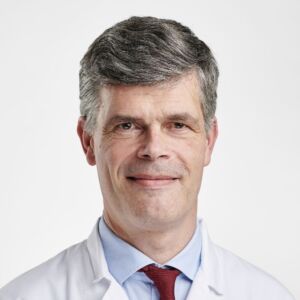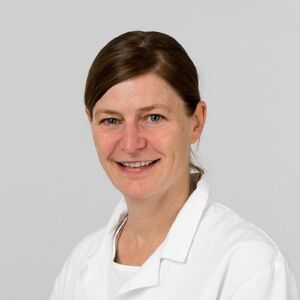Procedure
Doctors distinguish between different forms of hiatal hernias. In axial sliding hernia, the entrance to the stomach and the upper part of the stomach slip through the diaphragm into the chest cavity. In a paraesophageal hernia, which occurs less frequently than an axial hernia, parts of the stomach also enter the chest cavity through the diaphragm. However, the peritoneum and the connective tissue suspension ligaments between the stomach and the diaphragm are very much “worn out” and form a kind of sac that rests on the diaphragm next to the esophagus. “Paraesophageal” means “next to the esophagus.” Paraesophageal hernias can become very large, so that even the entire stomach slides into the chest cavity (upside-down or thoracic stomach).
Treatment of axial sliding hernia
An axial sliding hernia is only treated if the typical symptoms of reflux disease occur (heartburn, belching of air, difficulty swallowing). The doctor may prescribe medication that reduces acid production in the stomach or stimulates the activity of the gastrointestinal tract.
When is surgery necessary?
An axial sliding hernia must be operated on if
- the esophagus is inflamed due to the reflux of gastric juice (reflux esophagitis) and
- medication does not alleviate the symptoms.
The most commonly used surgical method is the so-called fundoplication. The operation changes the position of the stomach so that the passage from the esophagus to the stomach is closed again. This is to prevent food residues and stomach acid from re-entering the esophagus.
Treatment of paraesophageal hernia
A paraesophageal hernia can lead to serious complications. Even if you do not (yet) have any symptoms, your doctor will consider an operation.
Transabdominal gastropexy is a proven therapeutic measure. During this operation, the surgeon returns the displaced parts of the stomach completely to their original position.
Complete spectrum of recognized surgical procedures
A large number of patients with diaphragmatic hernias are examined and treated at the USZ. The initial presentation usually takes place via our special consultation hours. If you require further diagnostics, these will be carried out in a specialized functional laboratory. If an operation is necessary, you can rely on our many years of experience. We offer the complete range of recognized surgical procedures using minimally invasive techniques.

